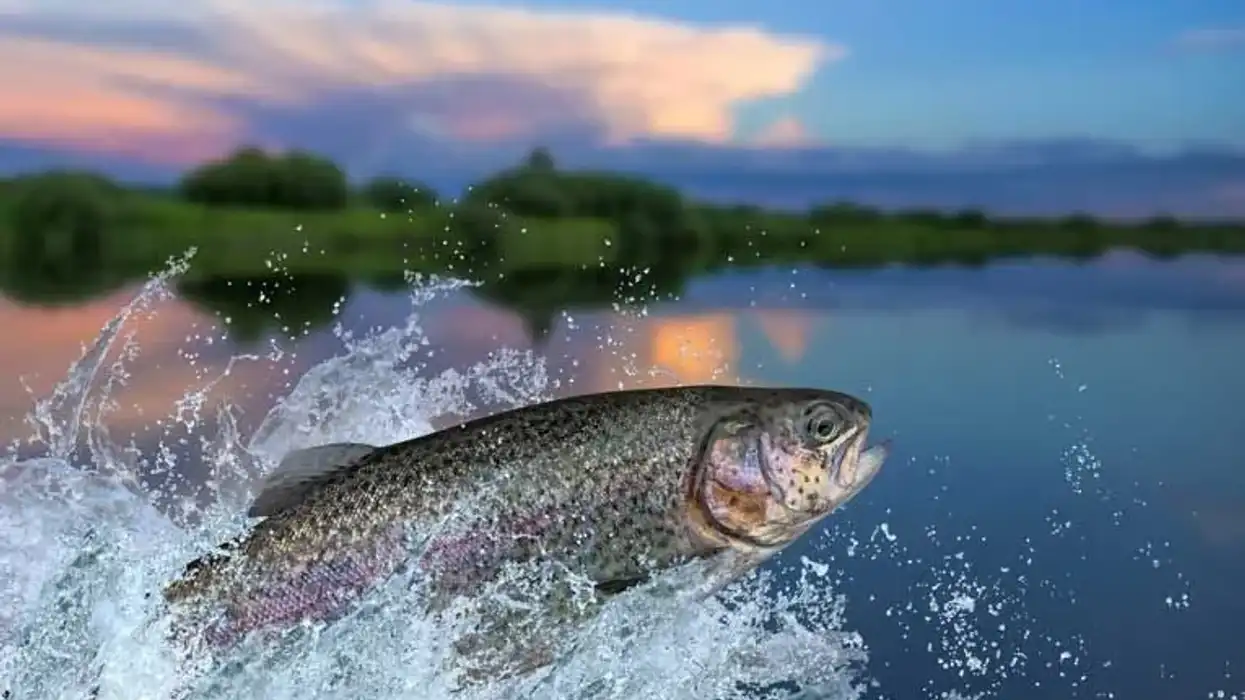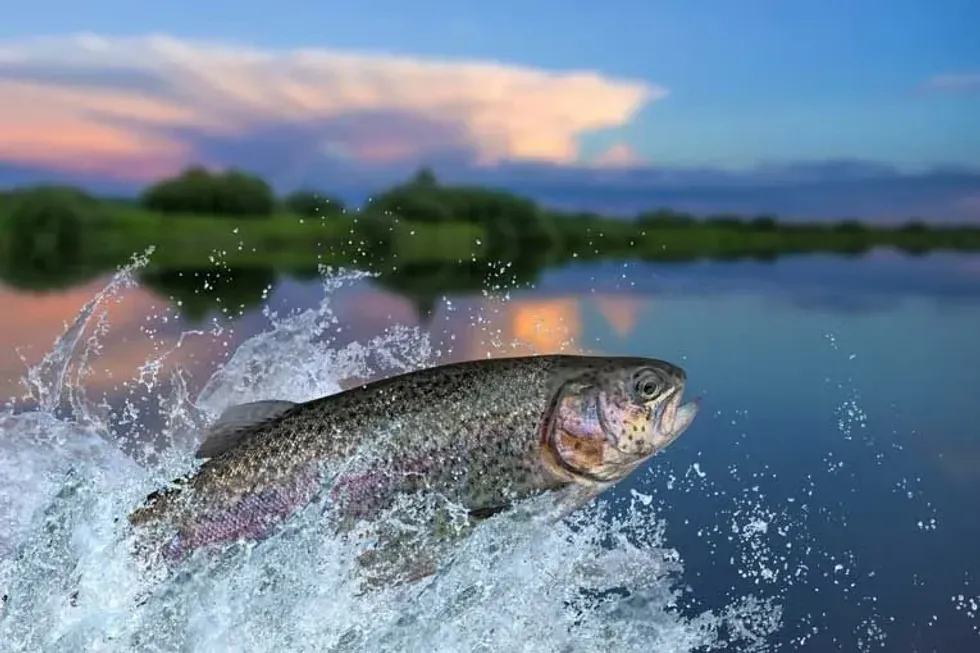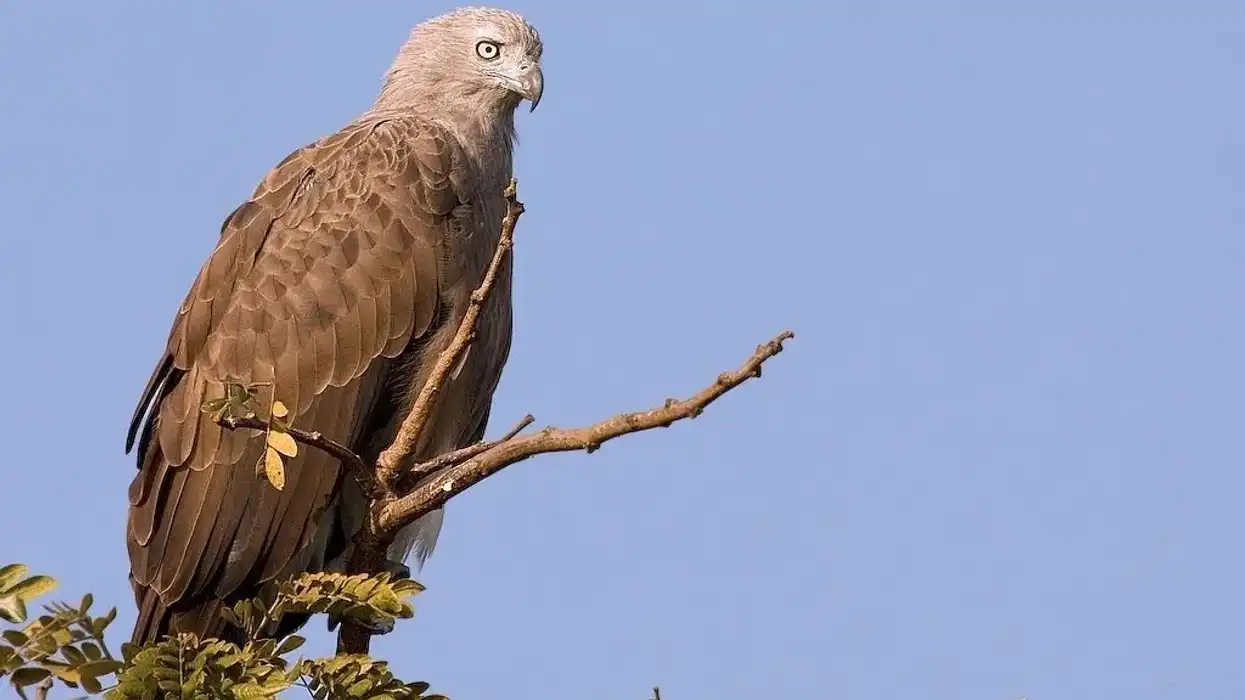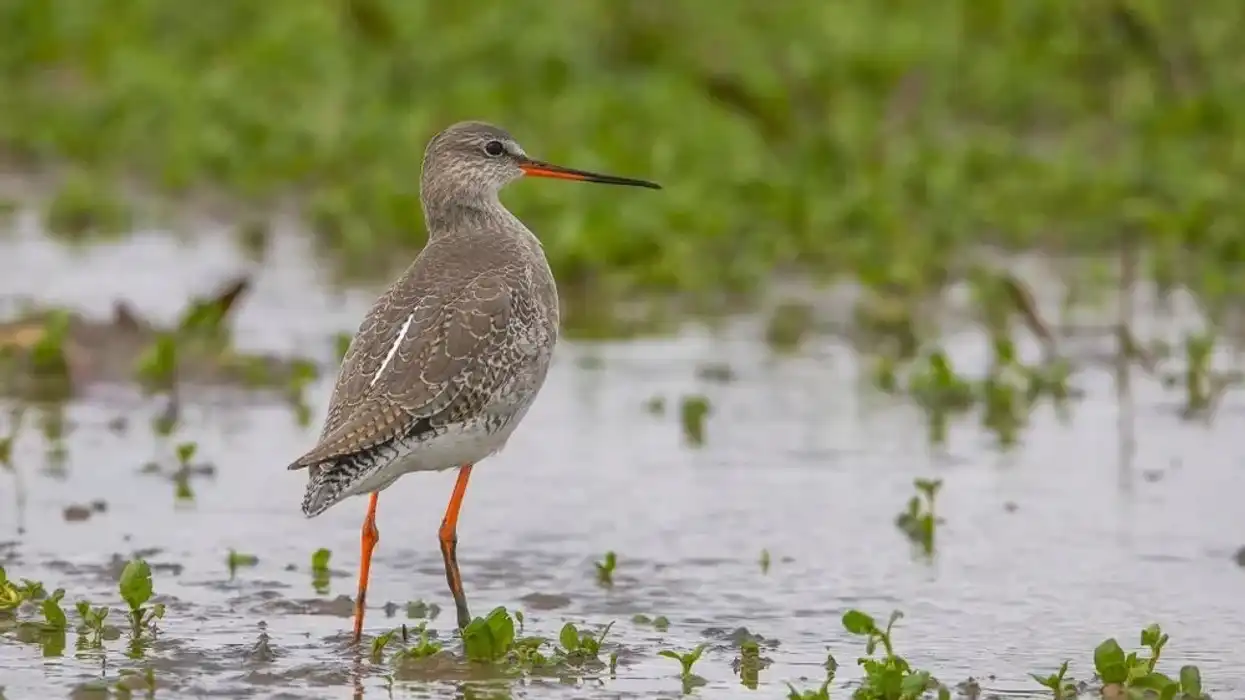Fun Trout Facts For Kids

Trout is a type of freshwater fish that can be commonly found in the regions of North America, Asia, and Europe. They are often found in cool streams and lakes.
There are many varieties of trout with each having its own scientific name. Such as rainbow trout (Oncorhynchus mykiss), golden trout (Oncorhynchus aguabonita), cutthroat trout (Oncorhynchus clarkia), speckled trout (Cynoscion nebulosus), brown trout (Salmo trutta).
Some other types are, brook trout (Salvelinus fontinalis), sea trout (Salmo trutta trutta), tiger trout (Salmo trutta × Salvelinus fontinalis), lake trout (Salvelinus namaycush), etc.
Rainbow trout or steelhead trout are very colorful fish with multicolored fins with varied patterns. But brown trout or sea trout are much plainer. They do not have spines and are entirely made of fins with an adipose fin near the tail.
Some species of trout were introduced in New Zealand and Australia back in the 19th century for the purposes of fishing. Even to this day trout are popular amongst fishing enthusiasts as game fish across North America, Asia, and Europe for fly fishing.
Trout is cooked in many ways and eaten widely across the world. They are extremely predatory in nature and can get aggressive both towards humans and other species of wildlife. Trout fish are closely related to salmon or charr fish. They are carnivorous in nature and feed on small fish, insects, flies, and crustaceans.
You may also check out the fact files on common sole and salmon from Kidadl.
Trout Interesting Facts
What type of animal is a trout?
The trout is a type of freshwater fish commonly found in the wild in cool streams and lakes.
What class of animal does a trout belong to?
Trout is a type of freshwater fish in wildlife, under the kingdom Animalia, family Salmonidae, genus Oncorhynchus. The scientific names differ based on the type of trout in question.
Such as rainbow trout or steelhead trout (Oncorhynchus mykiss), cutthroat trout (Oncorhynchus clarkia). Other types are brown trout (Salmo trutta), brook trout (Salvelinus fontinalis), sea trout (Salmo trutta trutta), tiger trout (Salmo trutta × Salvelinus fontinalis), lake trout (Salvelinus namaycush).
How many trouts are there in the world?
Trout conservation status is Not Evaluated by the IUCN Red List and therefore there are no records of the trout’s current population trend in the wild. However, rainbow trout, brown trout, brook trout, and other such trout are popular for fly fishing enthusiasts as game fish.
They are constantly restocked in open waters and bred in fish farms or fisheries.
Where does a trout live?
Trout can be commonly found in freshwaters such as cool streams, rivers, and lakes. Rainbow trout are commonly found in rivers and streams in North America and Asia. Brook trout are found in North-east America and Canada. Brown trout are common in the Arctic region.
What is a trout's habitat?
Trout prefer to live in freshwaters such as cool and clear fresh streams, lakes, and rivers. Some species of the trout in wild also are migratory in nature and travel thousands of miles to feed, reproduce, or for other reasons.
They are naturally found in streams and rivers in North America, Asia, and Europe. Example rainbow trout are commonly found in North America and Asia and brown trout are common in the Arctic region.
They were introduced in the regions of Australia and New Zealand by fishing enthusiasts in the 19th century for fishing purposes. Trout are also bred in fish farms or fisheries for purposes of trade and food.
Who do trouts live with?
Trout fish in wildlife can be found in freshwater in schools, similar to other types of native fish.
How long does a trout live?
Depending on the native species in wildlife, the lifespan can differ. Rainbow trout fish can live up to seven years, whereas lake trout can live for several decades. The average range is between four to six years.
How do they reproduce?
Trout such as rainbow trout, brown trout, sea trout, brook trout, etc are usually three to four years old when they spawn. Spawning is the process of releasing or depositing eggs into the water by aquatic creatures.
Depending on the type and habitat of native trout such as rainbow trout or brown trout, they migrate upstream to find an ideal spot to spawn their eggs. The spawning process occurs during the months of March and April.
At this time, both the water temperatures and water levels need to rise in order for the eggs to successfully spawn. The female trout scrapes a nest in gravel and a few male trout accompany her in this process.
The males lay side by side with the female trout in the middle and they simultaneously release the sperm and eggs for spawning. The female then covers the eggs with the gravel she had removed during the scraping process. She will keep spawning until all her eggs are released.
Trout do not monitor or take care of the nest or the eggs once they spawn. A female trout can spawn anywhere between 400-3000 eggs in one cycle into gravel, depending on her size. The process for the embryo to develop takes between 20-80 days time depending on external factors such as water temperature.
Once the eggs hatch they are called alevins. These alevins will feed in the stream or lake until they begin to grow. The success of the reproduction cycle is naturally more where trout fish are bred in fish farms, as opposed to the wild native fish.
What is their conservation status?
The conservation status of trout is Not Evaluated by the IUCN Red List. Rainbow trout, brown trout, brook trout, and tiger trout are very popular game fish in North America, Europe, Asia, New Zealand, and Australia.
They are used in food dishes and because of this, they are bred in fish farms and constantly replenished in open waters in the wild for fly fishing purposes. Young trout fishing threatens this fish species.
Trout Fun Facts
What do trouts look like?
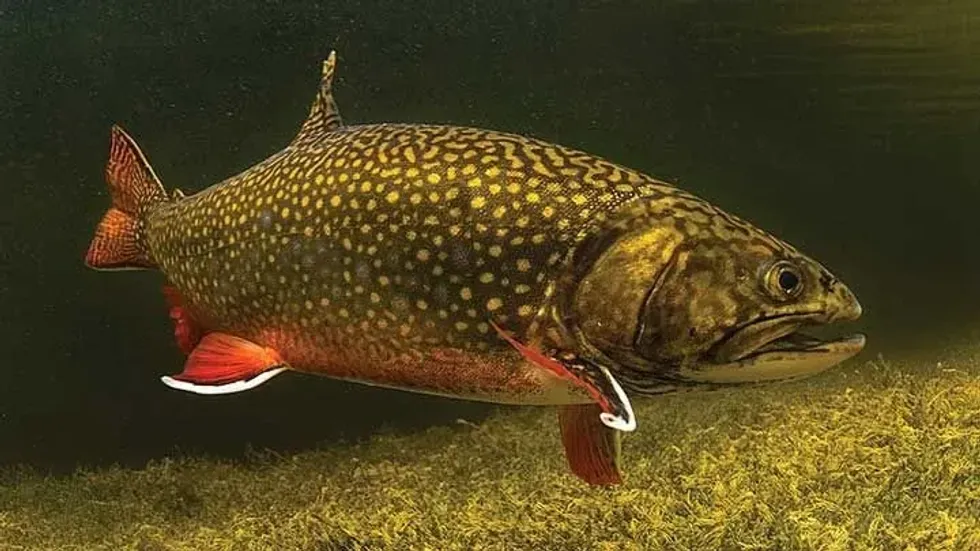
Trout (Oncorhynchus) are a very unique fish species that have different colors and patterns depending on their habitat. Rainbow trout in particular are known for their vibrant colors.
Most of the fish have colors and patterns that help them camouflage themselves based on where they are living. Their appearance can also drastically change based on their habitat, as they move from one location to another.
From an anatomic perspective, trout do not have fins and instead are made entirely of fins. They have a small adipose fin in the back near their tail. Trout fish that return from the sea are a plain silver color but fish like the rainbow trout are far more vibrant.
Rainbow trout can be blue-green or yellow-green in color with colorful streaks and spots along their body and fins. Trout can grow quite large and they grow anywhere between 20-30 in (50.8-76.2 cm) in length and can be as heavy as 8 lb (3.6 kg).
There are records where rainbow trout can grow up to 4 ft (1.2 m) in length and weigh nearly 53 lb (24 kg).
How cute are they?
Trout is a type of freshwater fish and as such cannot be categorized as cute. However, the rainbow trout species is known for having many vibrant colors and patterns on its body and scale, which can be beautiful to look at.
How do they communicate?
Trout communicate by releasing something called pheromones. This is an activity done by all types of trout.
When the female trout are ready to mate, they release these pheromones so that the males can pick up the scent to signal she is ready. Studies show trout can also detect the pheromones released by young trout.
How big is a trout?
Trout, similar to salmon, can grow large. The average trout can be compared to the size of a teacup. However, some rainbow trout can also grow very large up to 4 ft (1.2 m) in length and up to 53 lb (24 kg). Lake trout are also some of the larger subspecies.
How fast can a trout swim?
Trout fish are not known for speed. They tend to swim deeper in the water but during winters tend to come closer to the surface for feeding, at which time they swim much faster.
How much does a trout weigh?
An average trout is about 8 lb (3.6 kg), but they can get quite large and grow up to 53 lb (24 kg).
What are the male and female names of the species?
There are no specific names given to either the adult male or female trout fish.
What would you call a baby trout?
Young trouts or baby trouts are referred to as fry, troutlets, or troutlings.
What do they eat?
Trouts are predatory and carnivorous in diet, feeding on various insects. Common trout diet would be feeding on many other species such as smaller fish, insects, worms, and leeches. Trouts that live in lakes also include algae, zooplankton, and other decomposing matter besides insects in their diet.
Are they dangerous?
Trout can be aggressive in nature and bite in self-defense. In habitats where trout are not naturally found they can be an invasive species. This is a common behavior in all species of trout such as the brook trout, rainbow trout, etc.
Trout also are difficult once caught as game fish while fly fishing. Be careful and try to avoid holding the mouth area where they can bite you while fly fishing.
Would they make a good pet?
You can keep trout in an aquarium. But trout are game fish in the sport of fly fishing in open waters. rainbow trout, brook trout, sea trout, and other types of trout are also bred indoors in fish farms for purposes of trade and cooking. These farmed trout have better prospects in the seafood market.
Did you know...
The International Game Fish Association’s record book lists the world record for the biggest ever rainbow trout specimen caught at a whopping 48 lb (21.7 kg), 42 in (106.6 cm).
Another fun fact is, the famous American novelist Kurt Vonnegut named one of his main characters Trout, in the book 'Kilgore', because he found it funny that someone could be named after a fish.
Do trout have teeth?
Trout fish have large strong jaws which can bite hard enough to draw blood. Trout fish, unlike other species of fish, have teeth on the roof of their upper jaw.
This helps them bite, hold on to, and move food down their throat while feeding. This is a common feature in all species of trout such as the brook trout, rainbow trout, etc.
Eating trout
Trout fish is a common form of seafood across the world. The fish has a mild flavor and tastes very fish-like.
It has a delicate texture and there are different ways of cooking trout. Some trout recipes are baked trout fish, steamed trout fish, smoked trout fish, pan-fried trout fish, and grilled trout.
Trout vs. salmon
Trout and salmon are very similar types of fish but they do have some key differences. One of the main differences is that the trout is a freshwater fish and a salmon is a saltwater fish.
Naturally, this means they are both found in different areas such as the trout habitat would be clear streams or rivers versus the Salmon habitat would be the sea or ocean.
Another way to distinguish between the two is that salmon have a single row of teeth but the trout fish has double rows of teeth. Salmon also is richer and tastier in terms of taste, more so than the trout.
Here at Kidadl, we have carefully created lots of interesting family-friendly animal facts for everyone to discover! For more relatable content, check out these milkfish facts and monkfish facts for kids.
You can even occupy yourself at home by coloring in one of our trout coloring pages.
We Want Your Photos!
More for You
See All
Bachelors in Business Administration

Aashita DhingraBachelors in Business Administration
Based in Lucknow, India, Aashita is a skilled content creator with experience crafting study guides for high school-aged kids. Her education includes a degree in Business Administration from St. Mary's Convent Inter College, which she leverages to bring a unique perspective to her work. Aashita's passion for writing and education is evident in her ability to craft engaging content.
Postgraduate Diploma in Management

Sakshi RaturiPostgraduate Diploma in Management
Sakshi has experience in marketing strategy, social media planning, and recruiting industry experts for capstone projects, she has displayed a commitment to enhancing their skills and knowledge. She has won multiple awards, including a Certificate of Appreciation for Creative Writing and a Certificate of Merit for Immaculate Turut, and is always seeking new opportunities to grow and develop.
Disclaimer
1) Kidadl is independent and to make our service free to you the reader we are supported by advertising. We hope you love our recommendations for products and services! What we suggest is selected independently by the Kidadl team. If you purchase using the Buy Now button we may earn a small commission. This does not influence our choices. Prices are correct and items are available at the time the article was published but we cannot guarantee that on the time of reading. Please note that Kidadl is a participant in the Amazon Services LLC Associates Program, an affiliate advertising program designed to provide a means for sites to earn advertising fees by advertising and linking to Amazon. We also link to other websites, but are not responsible for their content.
2) At Kidadl, we strive to recommend the very best activities and events. We will always aim to give you accurate information at the date of publication - however, information does change, so it’s important you do your own research, double-check and make the decision that is right for your family. We recognise that not all activities and ideas are appropriate for all children and families or in all circumstances. Our recommended activities are based on age but these are a guide. We recommend that these ideas are used as inspiration, that ideas are undertaken with appropriate adult supervision, and that each adult uses their own discretion and knowledge of their children to consider the safety and suitability. Kidadl cannot accept liability for the execution of these ideas, and parental supervision is advised at all times, as safety is paramount. Anyone using the information provided by Kidadl does so at their own risk and we can not accept liability if things go wrong.
3) Because we are an educational resource, we have quotes and facts about a range of historical and modern figures. We do not endorse the actions of or rhetoric of all the people included in these collections, but we think they are important for growing minds to learn about under the guidance of parents or guardians.
